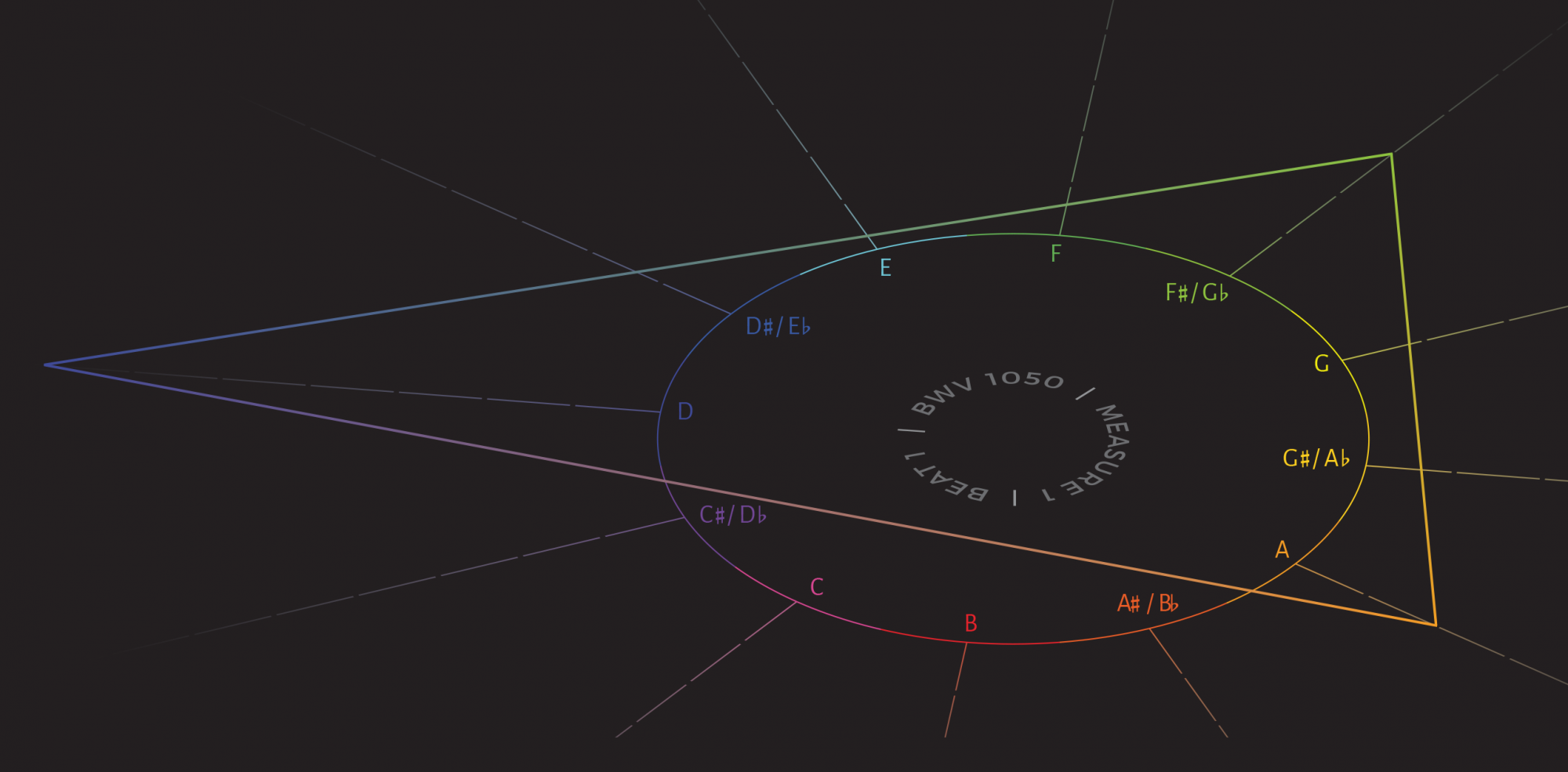Sam Bivens and Aaron Grant, editors
Editors’ Introduction
PDF
Articles
Brian Alegant | Reconsidering Debussy’sBruyères
PDF —— AbstractThis analysis compares and contrasts two of Claude Debussy's pentatonic preludes, La fille aux cheveux de lin and Bruyères. It argues that these works are remarkably similar in terms of form and harmonic language, but quite distinct in terms of their cadential structure and handling of foreign notes, which often serve as catalysts. Particular attention is paid to a nexus passage in Bruyères that sheds further light on Debussy's idiosyncratic and nuanced harmonic praxis.
Mark Sallmen | Transposition Networks and Network Chains in Schoenberg’s Sechs kleine Klavierstücke, Op. 19
PDF —— AbstractUsing David Lewin's (1987) discussion of Schoenberg's Op. 19, No. 6 as a starting point, this article develops an analysis of all six movements of Op. 19 based on transposition networks. The analysis associates not only multiple statements of a given network but also networks related by retrograde, inversion, or both, which are said to be of the same network type. Network-type repetition elucidates pitch-class connections within phrases, between adjacent and non-adjacent phrases within the same movement, and among passages from different movements. Since Schoenberg's pattern repetitions are often somewhat hidden, the analysis identifies features of the musical surface that help to clarify the network of relationships. The networks often create network chains, which are (overlapping) series of networks of the same type and provide coherent ways to hear through complete phrases and movements. Network-type chains, which involve multiple network types, organize the large-scale network structure of the entire opus.
Nancy Rogers | Hearing an Old Story in a New Way: An Analysis of Loewe’s Erlkönig
PDF —— AbstractCarl Loewe is relatively unknown today, but he was well respected throughout Europe during his lifetime. Loewe’s setting of Goethe’s “Erlkönig,” dating from 1817–1818, became his best-known composition; of the approximately 100 known Erlkönig settings, it is second only to Schubert’s in fame. Unfortunately, Loewe’s Erlkönig setting has often been denigrated simply because it is not Schubert’s. Rather than engaging in a misguided attempt to prove the inherent superiority of either setting, this article will address Loewe’s music on its own terms. As Loewe himself reportedly proclaimed, there is more than one way to set a text.
Michael Buchler | Are There Any Bad (or Good) Transformational Analyses?
PDF —— AbstractThis article considers two related issues: how we envision methodology and evaluate success in transformational approaches to analysis. Inasmuch as methodology drives analysis, as Rings (2006) suggests, we might regard the transformational toolbox as collectively comprising a less robust analytical methodology than does, for example, Lerdahl and Jackendoff’s A Generative Theory of Tonal Music (1983). Indeed, to use GTTM terms, we might say that transformational methods offer only well-formedness, not preference, rules. But when a method lacks preference rules, how can its applications be evaluated? If all well-formed analyses are equally good—or at least valid—then criticism (which is routinely considered integral to our field) becomes impossible and this article’s title question becomes pertinent.
Su Yin Mak | String Theory: An Ethnographic Study of a Professional Quartet in Hong Kong
PDF —— AbstractRecent scholarship has witnessed welcome efforts to formulate models of “performer’s analysis” that expand the definition of analysis beyond its default meaning as the text-based, intra-opus examination of the score. Yet there remains within the field a strong tendency towards the binary opposition between performative–practical and critical–theoretical orders of knowledge; structure is often consigned to the domain of the latter, and its role within “performer’s analysis” has received little attention. This article reports on my attempt to redress the omission through an ethnographic study of a professional string quartet in Hong Kong. Quantitative and qualitative analysis of the rehearsal footage, along with interviews with the players, offers insights on how professional performers perceive, conceptualize, and communicate about musical structure. The research findings suggest that (1) metaphorical and embodied descriptions of music and (2) real-time, listening- and experience-based analysis can serve to mediate between theoretical and practical perspectives of musical structure. It also demonstrates how methodological interactions between theory and ethnography might contribute to such mediation.
Evan Jones | Dynamics and Dissonance: The Implied Harmonic Theory of J.J. Quantz
PDF —— AbstractChapter 17, Section 6 of Quantz’s Versuch einer Anweisung die Flöte traversiere zu spielen (1752) includes a short original composition entitled “Affettuoso di molto.” This piece features an unprecedented variety of dynamic markings, alternating abruptly from loud to soft extremes and utilizing every intermediate gradation. Quantz’s discussion of this example provides an analytic context for the dynamic markings in the score: specific levels of relative amplitude are prescribed for particular classes of harmonic events, depending on their relative dissonance. Quantz’s categories anticipate Kirnberger’s distinction between essential and nonessential dissonance and closely coincide with even later conceptions as indicated by the various chords’ spans on the Oettingen–Riemann Tonnetz and on David Temperley’s “line of fifths.” The discovery of a striking degree of agreement between Quantz’s prescriptions for performance and more recent theoretical models offers a valuable perspective on eighteenth-century musical intuitions and suggests that today’s intuitions might not be very different.
Matthew Bribitzer-Stull | Die Geheimnisse der Form bei Richard Wagner: Structure and Drama as Elements of Wagnerian Form
PDF —— AbstractWagnerian operatic forms span a continuum. At one end lie the delineated, non-developmental, “structural” kinds of shapes, at the other the “formless” streams of music that arguably depend on the extra-musical for their continuity and coherence. In between we find musical processes that embody more of a sense of motion and development than the fixed structures, but that cohere without the need of a text or programme. In this article I attempt to illustrate this range by applying my analytic methodology to two contrasting examples, one leaning heavily toward the structural (the Todesverkündigung scene from Die Walküre Act II, Scene 4) and the other (the Act II, Scene 2 love duet from Tristan und Isolde) best understood as a musical representation of the drama. The overarching point I make with this comparison is that the range of Wagnerian formal techniques is best served by a flexible, multivalent analytic orientation.
J. Daniel Jenkins | “Im Zusammenhang des Zwölftonwegs sprechen”: Reconsidering Pitch-class Sets in Schoenberg’s Atonal Music
PDF —— AbstractArnold Schoenberg’s 1911 précis for a book on counterpoint called Das Komponieren mit selbständige Stimmen presages his interest in and return to counterpoint in Pierrot lunaire. While many authors have pointed to the contrapuntal studies within Pierrot, including “Nacht,” “Der Mondfleck,” and “Parodie,” what has not been previously discussed is how Das Komponieren mit selbständige Stimmen, and, by extension, Schoenberg’s writings on counterpoint in general, could serve as a context for better understanding these contrapuntal Pierrot songs. This article focuses on “Nacht.” In the early reception of atonal period music within Schoenberg’s circle, “Nacht” emerged as a seminal work largely because it was seen as a harbinger of things to come. Reconsidering this early reception of “Nacht” leads to analysis of passages from “Nacht.” The article concludes with some thoughts about what this analysis suggests about the analysis of Schoenberg’s atonal compositions in general.
Peter Franck | Structural Framing and Its Interaction with Linkage Technique
PDF —— AbstractThis essay investigates how structural framing (the motivic association of opening and closing gestures of a formal unit) interacts with linkage technique (Knüpftechnik), a Schenkerian concept concerning the method of having a concluding gesture in one passage become an initiating gesture in a passage that immediately follows. Although structural framing emphasizes discreteness by outlining formal units, and although linkage technique promotes continuity by stringing together adjacent formal units, both techniques can work together. The essay explains by using paradigms that model the interaction of structural framing and linkage technique and applying them to analyses of musical passages. In general, the essay showcases how content—motives articulated via structural framing and linkage technique—impacts the demarcation of formal units.
John Koslovsky and Matthew Brown | The Contrapuntal Legacy of the French fin-de-siècle: A Look at Dukas’s Piano Sonata in E-flat
PDF —— AbstractThis essay takes a look at Paul Dukas’s Piano Sonata in E-flat, a piece exhibiting a rich array of formal and contrapuntal detail. In contrast to other analytical studies of French fin-de-siècle pieces, which focus on the purely chordal aspects of the music, we propose an analysis that emphasizes the contrapuntal dimension. The paper first develops what we call the “Combined Melodic String Hypothesis” (CMSH), and it does so by drawing on the writings of both Théodore Dubois and Heinrich Schenker. It then explores Dukas’s own use of contrapuntal principles in the second and third movements to his sonata, using the CMSH and other Schenkerian-derived techniques. In the end, the paper aims to bridge the gap between the training composers like Dukas received at the Conservatoire and the works produced as a result of that training.

